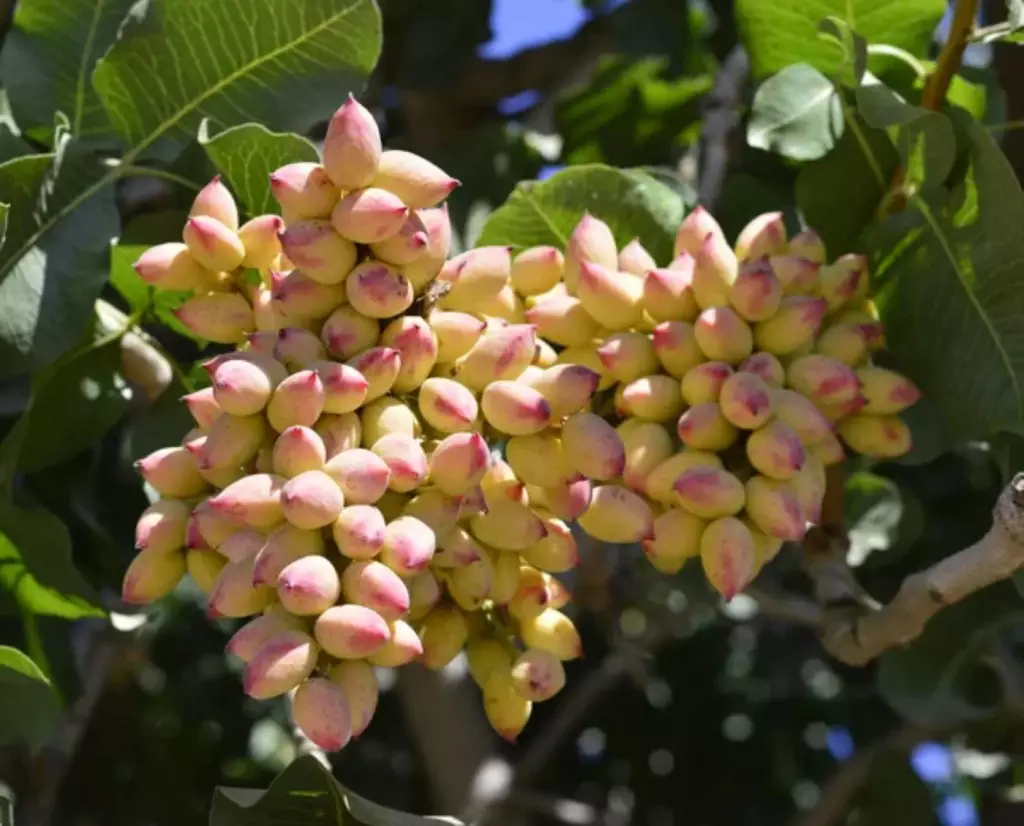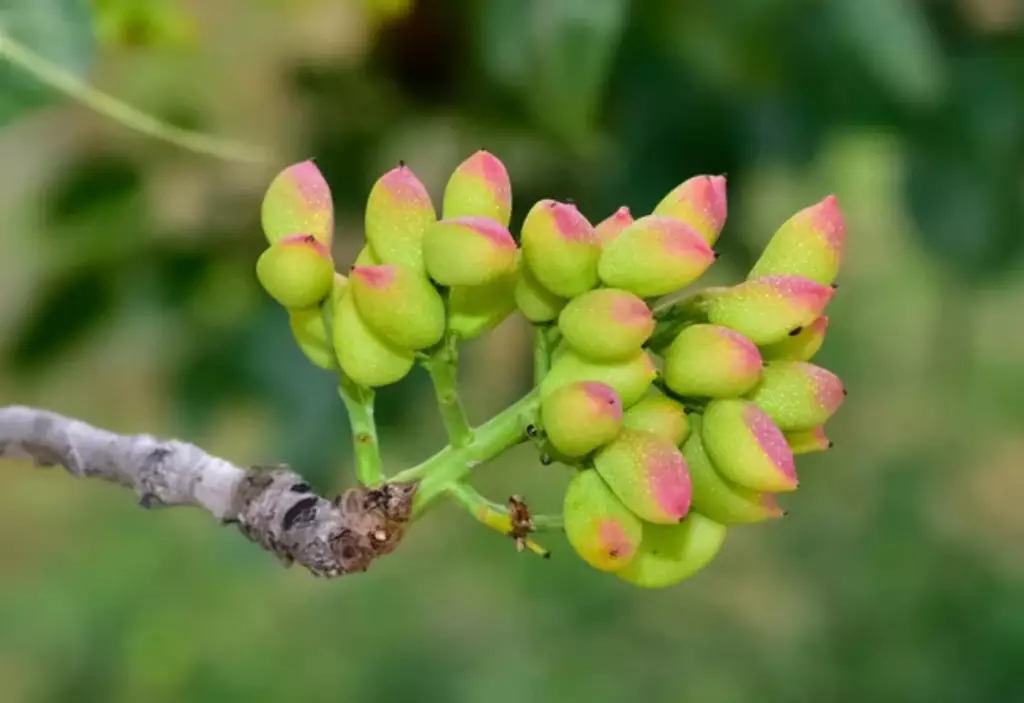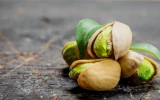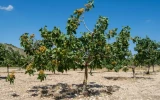What's the Average Pistachio Yield per Tree?
Pistachio trees are not only known for producing delicious and nutritious nuts but also for their impressive yield potential. The harvest per pistachio tree is affected by factors including the age of the tree, the growing conditions, and the variety of pistachio. In this article, we'll explore these factors, and uncover the average output per tree.
Generally, a pistachio tree will start to produce fruit in its fourth or fifth year of life. At this age, the yield per tree can range from 2.2 to 4.4 lbs. (1-2 kg) of dry nuts, or 5.5 to 11 lbs. (2.5 to 5 kg) of freshly harvested fruits.
To maximize your yield per tree, one of the few things you can do is make sure you're planting the right variety of pistachio for your climate and soil conditions. Let's see what other steps you can take to help ensure that your pistachio trees are producing the maximum yield possible.
Summary
- The Kerman pistachio variety is known for its high yield, with an average of 50 pounds per tree, while the Golden Hills variety is capable of producing the highest nut yields, reaching an impressive 60 pounds per tree when mature.
- The Kerman variety's self-fertility contributes to its consistent and abundant yield, while the Lost Hills variety is known for producing large, well-filled nuts with a high percentage of the kernel, enhancing its overall yield per tree.
- Pistachio trees require between 30 and 60 inches of water per year, and they prefer temperatures between 60°F (16°C) and 85°F (29°C) to thrive and produce maximum yields.

On this page:
Average Pistachio Yield per Tree Based on Variety
The average pistachio yield per tree can vary based on the variety of pistachios. Here are the average yields per tree for some common pistachio varieties:
| Pistachio Variety | Average Yield per Tree (lbs) |
|---|---|
| Kerman | 50 |
| Peters | 45 |
| Lost Hills | 55 |
| Golden Hills | 60 |
The Kerman variety is a late-leafing and late-ripening variety
The Kerman variety is one of the most widely cultivated and commercially important types of pistachio. It is prized for its large, flavorful nuts and high yields.
The tree is known for its vigorous growth and large, spreading canopy. It is a late-leafing and late-ripening variety, making it well-suited for regions with hot, dry summers and mild winters.
Kerman pistachio trees are known for their ability to produce a high number of pistachio nuts per cluster, and they have a tendency to bear fruit consistently from year to year. This reliability in fruit production contributes to the overall high yield of the Kerman variety.

Additionally, they are self-fertile, meaning that they do not require cross-pollination from another variety of pistachio trees to set fruit.
This self-fertility is a key factor in the consistent and abundant yield of the Kerman variety, as it ensures that the trees can produce a large crop of nuts without the need for additional pollinators.
Furthermore, the Kerman variety is well-adapted to the environmental conditions of many pistachio-growing regions, including the arid and semi-arid climates of California, Iran, and other major pistachio-producing areas.
Peters variety is a male cultivar of Pistachios
The Peters Pistachio variety is renowned for its high yield and excellent quality. It is a male cultivar known for its ability to pollinate other female pistachio trees effectively.
This cultivar is known for its strong and consistent production of pistachios. The tree's genetic composition contributes to its ability to bear a substantial amount of fruit, resulting in a high average yield per tree.
Moreover, this variety is well-suited to the growing conditions in many pistachio-producing regions. It thrives in areas with warm, dry climates and well-drained soils.
When cultivated under optimal conditions and provided with adequate care, these trees are capable of producing a substantial amount of high-quality pistachios.
The Lost Hills variety is known for its exceptional size and plumpness
One of the key characteristics of Lost Hills is its adaptability to different growing conditions. This variety is well-suited to the climate and soil conditions of the Lost Hills region in California, where it thrives and produces high-quality nuts.
The trees are also known for their vigorous growth and high productivity. They have a strong branching structure and are capable of producing a large number of nuts per tree.
Furthermore, this variety is known for producing large, well-filled nuts with a high percentage of kernel. This means that each nut contains a substantial amount of edible kernel, contributing to the overall yield per tree.
Mature Golden Hills pistachio trees are capable of producing the highest nut yields
The Golden Hills pistachio variety is renowned for its high yield and productivity, often producing an impressive 60 lbs of nuts per tree. This remarkable output can be attributed to several factors, including the specific characteristics of the Golden Hills variety and the optimal growing conditions in which it thrives.

These trees are carefully selected and cultivated to exhibit strong, healthy growth patterns and robust nut production. The variety's genetic traits contribute to its ability to consistently yield a substantial quantity of high-quality nuts.
Perhaps also consider the age of the trees when discussing their yield. Mature Golden Hills pistachio trees, typically around 7–10 years old, are capable of producing the highest nut yields. As the trees reach peak maturity, their capacity for nut production is maximized, contributing to the impressive 60 lbs per tree yield.
If you want to find out the required density of different pistachio varieties in an acre, you can find that out in this article.
Pistachio Trees Can Produce Up to 11 Pounds of Fresh Fruits
Pistachio trees typically begin to bear fruit in their fourth or fifth year of life. Once the trees reach this stage, the yield per tree can vary but generally ranges from 2.2 to 4.4 lbs. (1-2 kg) of dry nuts, or 5.5 to 11 lbs. (2.5 to 5 kg) of freshly harvested fruits.
The actual yield can be influenced by factors such as tree health, environmental conditions, and agricultural practices.
Pistachio trees are deciduous trees that belong to the cashew family. These trees are native to regions of Central Asia and the Middle East, where they have been cultivated for thousands of years. They are well-known for their delicious and nutritious nuts, which are widely consumed around the world.

Pistachio trees have both male and female trees, and the female trees produce the nuts. Therefore, in commercial orchards, it is common to plant a certain ratio of male-to-female trees to ensure proper pollination and fruit set. The trees are typically harvested once a year, usually in late summer or early fall, depending on the specific growing region.
The cultivation of pistachio trees requires a suitable climate with hot, dry summers and cool winters. They are also well-adapted to arid and semi-arid regions, making them an important crop in areas with limited water resources. Proper irrigation, soil management, and pest control are essential for maximizing the yield and quality of the nuts.
In addition to their economic value, pistachio trees also provide environmental benefits, such as soil stabilization and conservation of biodiversity. The nuts themselves are highly nutritious, containing healthy fats, protein, fiber, and various vitamins and minerals, making them a popular choice for snacking and culinary use.
Growth Factors to Maximize Pistachio Yield
In order to maximize the yield of your pistachio trees, you must make sure that they receive the right amount of nutrients, water, and sunlight. Here are some of the growth factors that you should consider:
They require well-draining soils
Pistachio trees grow best in well-draining soils with a pH range of 7.0 to 8.0. The soil should be deep, fertile, and rich in organic matter.
Pistachio trees prefer sandy loam soil, but they can also grow in clay soils. Try to avoid soils that are too heavy or compacted, as they can restrict the growth of the roots. To know more about the ideal soil conditions for pistachios, this article may be helpful.
They require regular watering and enough irrigation
Pistachio trees require regular watering, especially during the first few years of growth. The amount of water required depends on the climate and soil conditions.
In general, pistachio trees require between 30 and 60 inches of water per year. Overwatering can lead to root rot, so you may want to avoid excessive watering.
Irrigation is also important for pistachio trees, especially in areas with low rainfall. Drip irrigation is the most efficient way to water pistachio trees, as it delivers water directly to the roots. Again, avoid overhead irrigation, as it can lead to fungal diseases.

They require full sun exposure and a specific temperature
Pistachio trees require full sunlight to grow and produce fruit. They can tolerate temperatures as low as 10°F (-12°C) and as high as 115°F (46°C).
However, they prefer temperatures between 60°F (16°C) and 85°F (29°C). If the temperature drops below 10°F (-12°C), the trees may experience frost damage.
They require a balanced amount of nutrients
Pistachio trees require a balanced supply of nutrients to grow and produce fruit. They require nitrogen, phosphorus, potassium, and other micronutrients. Fertilizers should be applied based on soil test results and the nutrient requirements of the trees.
As much as possible, avoid over-fertilization, as it can lead to excessive vegetative growth and reduced fruit quality, however, avoid also under-fertilization, as it can lead to nutrient deficiencies and reduced yield.



